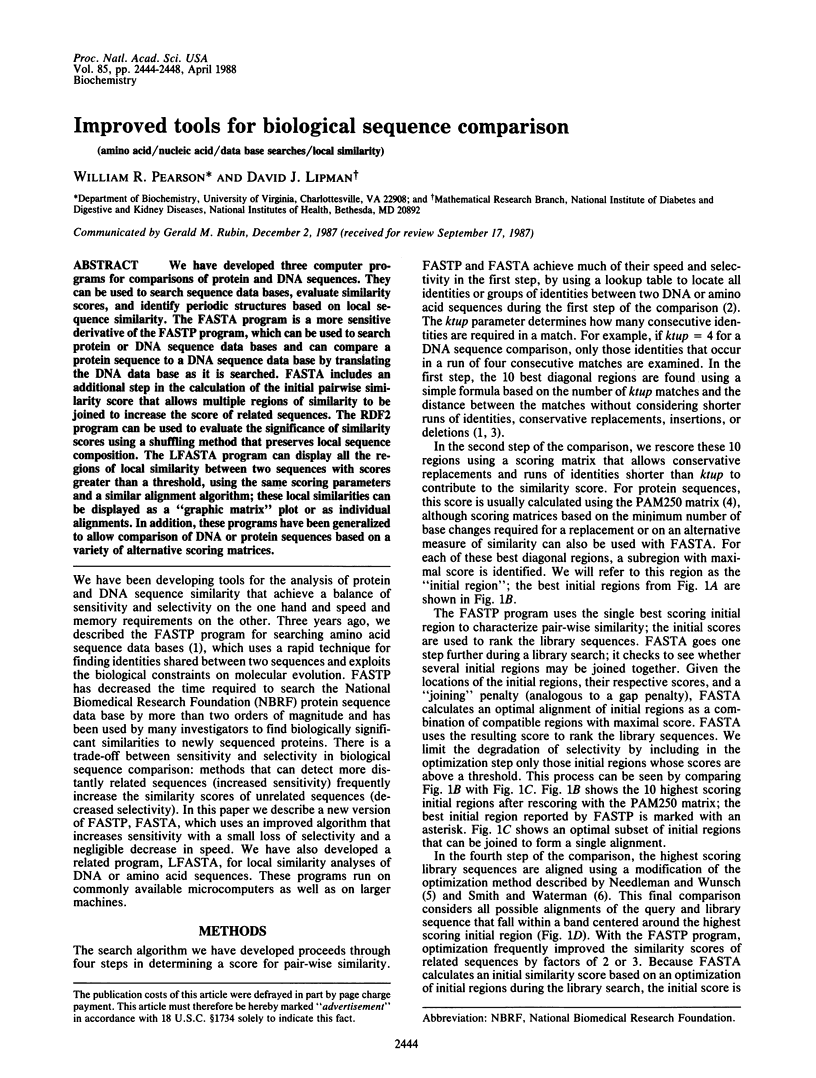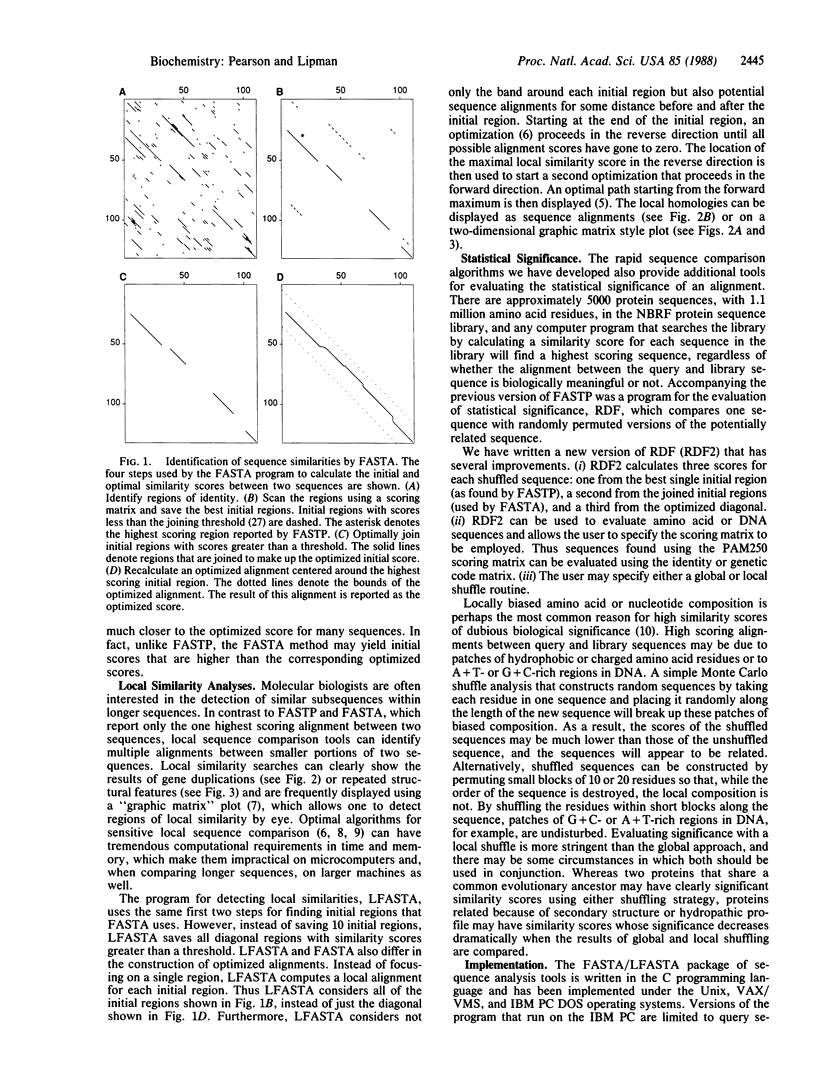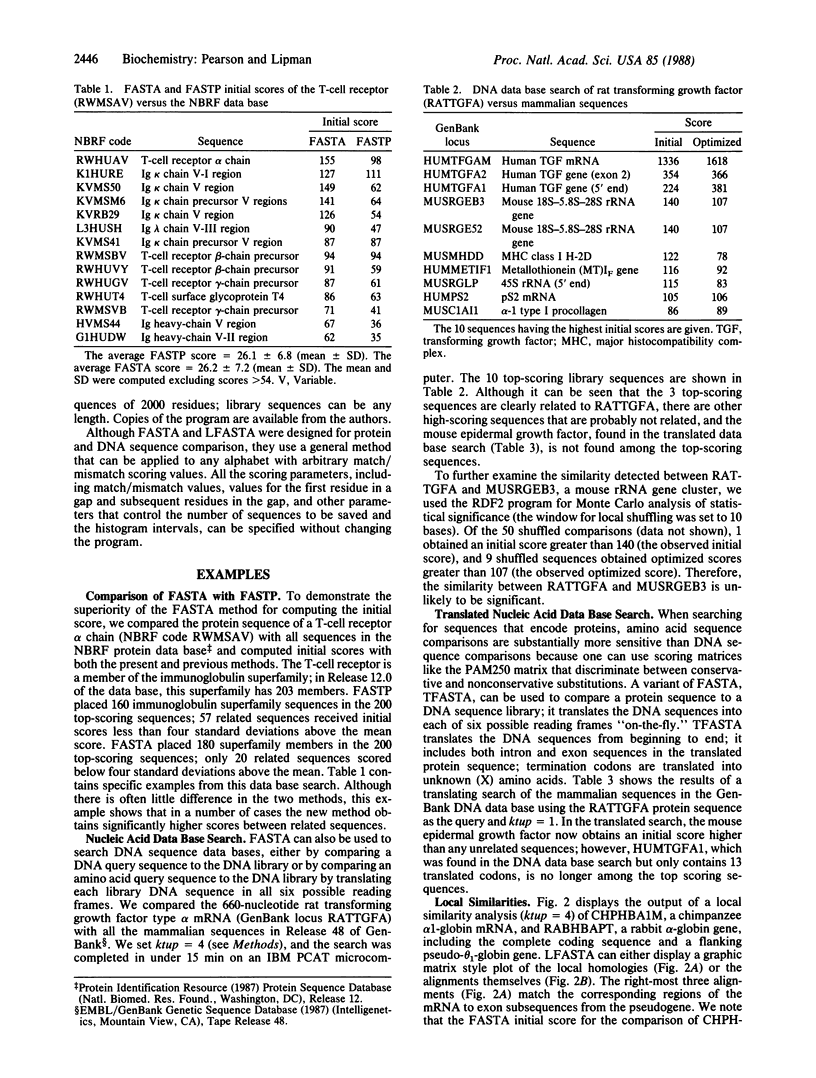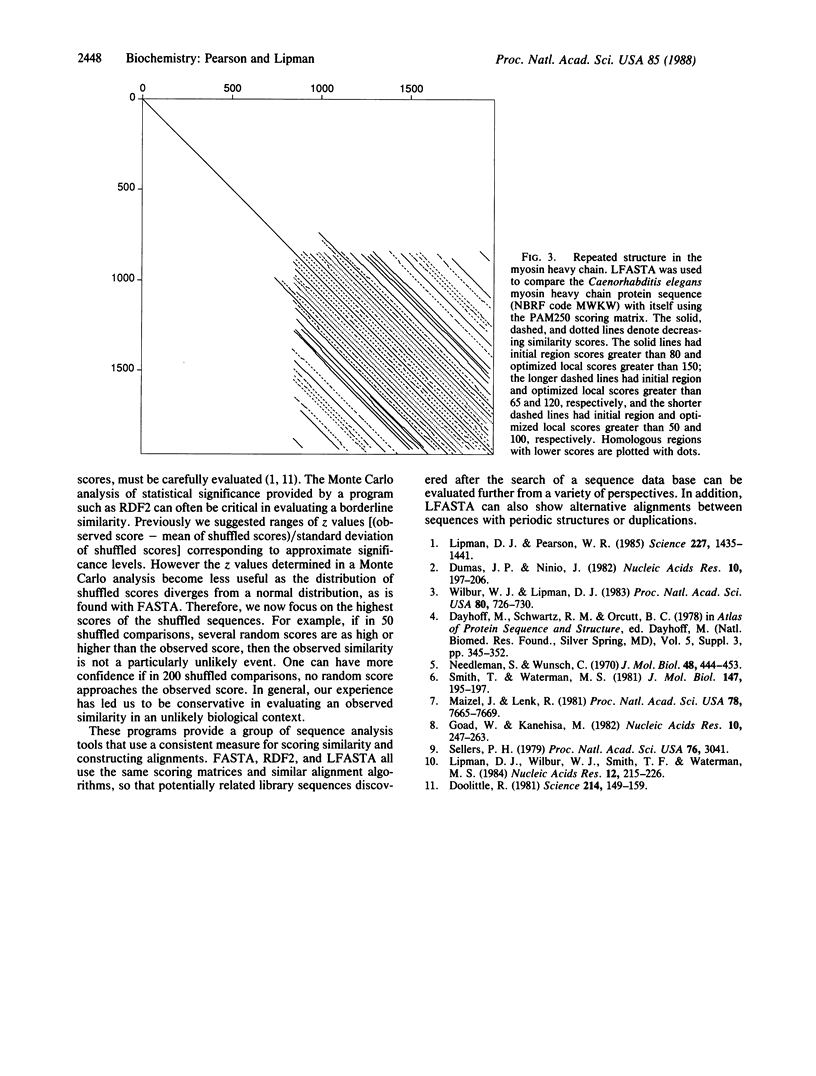Abstract
We have developed three computer programs for comparisons of protein and DNA sequences. They can be used to search sequence data bases, evaluate similarity scores, and identify periodic structures based on local sequence similarity. The FASTA program is a more sensitive derivative of the FASTP program, which can be used to search protein or DNA sequence data bases and can compare a protein sequence to a DNA sequence data base by translating the DNA data base as it is searched. FASTA includes an additional step in the calculation of the initial pairwise similarity score that allows multiple regions of similarity to be joined to increase the score of related sequences. The RDF2 program can be used to evaluate the significance of similarity scores using a shuffling method that preserves local sequence composition. The LFASTA program can display all the regions of local similarity between two sequences with scores greater than a threshold, using the same scoring parameters and a similar alignment algorithm; these local similarities can be displayed as a "graphic matrix" plot or as individual alignments. In addition, these programs have been generalized to allow comparison of DNA or protein sequences based on a variety of alternative scoring matrices.
Full text
PDF




Selected References
These references are in PubMed. This may not be the complete list of references from this article.
- Doolittle R. F. Similar amino acid sequences: chance or common ancestry? Science. 1981 Oct 9;214(4517):149–159. doi: 10.1126/science.7280687. [DOI] [PubMed] [Google Scholar]
- Dumas J. P., Ninio J. Efficient algorithms for folding and comparing nucleic acid sequences. Nucleic Acids Res. 1982 Jan 11;10(1):197–206. doi: 10.1093/nar/10.1.197. [DOI] [PMC free article] [PubMed] [Google Scholar]
- Goad W. B., Kanehisa M. I. Pattern recognition in nucleic acid sequences. I. A general method for finding local homologies and symmetries. Nucleic Acids Res. 1982 Jan 11;10(1):247–263. doi: 10.1093/nar/10.1.247. [DOI] [PMC free article] [PubMed] [Google Scholar]
- Lipman D. J., Pearson W. R. Rapid and sensitive protein similarity searches. Science. 1985 Mar 22;227(4693):1435–1441. doi: 10.1126/science.2983426. [DOI] [PubMed] [Google Scholar]
- Lipman D. J., Wilbur W. J., Smith T. F., Waterman M. S. On the statistical significance of nucleic acid similarities. Nucleic Acids Res. 1984 Jan 11;12(1 Pt 1):215–226. doi: 10.1093/nar/12.1part1.215. [DOI] [PMC free article] [PubMed] [Google Scholar]
- Maizel J. V., Jr, Lenk R. P. Enhanced graphic matrix analysis of nucleic acid and protein sequences. Proc Natl Acad Sci U S A. 1981 Dec;78(12):7665–7669. doi: 10.1073/pnas.78.12.7665. [DOI] [PMC free article] [PubMed] [Google Scholar]
- Needleman S. B., Wunsch C. D. A general method applicable to the search for similarities in the amino acid sequence of two proteins. J Mol Biol. 1970 Mar;48(3):443–453. doi: 10.1016/0022-2836(70)90057-4. [DOI] [PubMed] [Google Scholar]
- Sellers P. H. Pattern recognition in genetic sequences. Proc Natl Acad Sci U S A. 1979 Jul;76(7):3041–3041. doi: 10.1073/pnas.76.7.3041. [DOI] [PMC free article] [PubMed] [Google Scholar]
- Smith T. F., Waterman M. S. Identification of common molecular subsequences. J Mol Biol. 1981 Mar 25;147(1):195–197. doi: 10.1016/0022-2836(81)90087-5. [DOI] [PubMed] [Google Scholar]
- Wilbur W. J., Lipman D. J. Rapid similarity searches of nucleic acid and protein data banks. Proc Natl Acad Sci U S A. 1983 Feb;80(3):726–730. doi: 10.1073/pnas.80.3.726. [DOI] [PMC free article] [PubMed] [Google Scholar]


